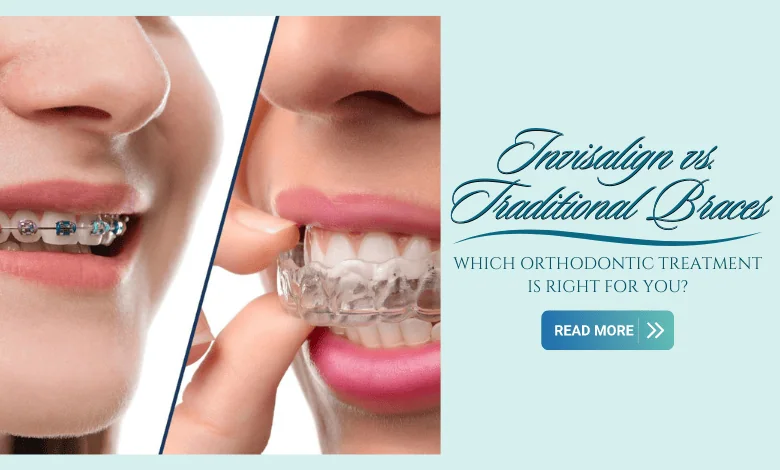Invisalign vs. Traditional Braces: Which Orthodontic Treatment is Right for You?

Choosing the right orthodontic treatment can be a daunting decision, especially with options like Invisalign and traditional braces available. Both methods have their unique advantages and disadvantages, and understanding these can help you make an informed choice for a straighter, healthier smile. Your family dentist will be able to help you choose between Invisalign and traditional braces considering your dental condition.
Aesthetics and Appearance
One of the most significant differences between Invisalign and traditional braces is their appearance. Invisalign aligners are virtually invisible; made from a clear plastic that fits snugly over your teeth. This makes them an attractive option for adults and teenagers who may feel self-conscious about wearing braces.
On the other hand, traditional braces consist of metal brackets and wires, which are more noticeable. However, modern braces offer options like ceramic brackets or colorful elastics that can make them more appealing.
Comfort and Convenience
When it comes to comfort, Invisalign tends to have the upper hand. This is because the smooth plastic aligners are custom-made to fit your teeth and generally cause less irritation to the gums and cheeks compared to the metal wires and brackets of traditional braces. In addition, Invisalign aligners are removable, allowing you to eat, brush, and floss with ease. This convenience can be a significant advantage for busy adults and active teenagers.
However, in contrast, traditional braces require more careful maintenance and may involve dietary restrictions to avoid damaging the hardware.
Treatment Duration
The duration of treatment with Invisalign or traditional braces can vary depending on the complexity of the dental issues being addressed. Invisalign is typically used for mild to moderate cases and can take anywhere from 12 to 18 months to complete.
Traditional braces, on the other hand, are often more effective for complex cases involving significant tooth movement or jaw alignment issues. In such cases, treatment may last from 18 months to three years.
So, it’s best to consult with an orthodontist to determine which option can achieve the best results within the desired timeframe.
Cost Considerations
Cost is another factor that often influences the decision between Invisalign and traditional braces. On average, Invisalign tends to be more expensive due to the technology and materials used in creating the custom aligners. However, the cost can vary widely based on individual treatment needs and the orthodontist’s fees.
Traditional braces are generally more affordable, but costs can add up if additional treatments or adjustments are required. Many orthodontic practices offer payment plans or financing options to help manage the expense of either treatment.
Maintenance and Care
Maintenance is a crucial aspect of any orthodontic treatment. With Invisalign, patients must be disciplined about wearing the aligners for 20-22 hours per day and switching to a new set every one to two weeks. Proper hygiene is essential, as the aligners need regular cleaning to prevent discoloration and odor.
Traditional braces require regular adjustments by an orthodontist, and patients must be diligent in maintaining oral hygiene around the brackets and wires to prevent plaque buildup and tooth decay.
In fact, both options demand a commitment to following the orthodontist’s instructions to ensure successful outcomes.
Suitability for Different Patients
The decision between Invisalign and traditional braces often depends on the patient’s age, lifestyle, and specific dental needs. Invisalign is popular among adults and image-conscious teenagers because of its discreet appearance and flexibility. It’s also suitable for those who can commit to wearing the aligners consistently and maintain good oral hygiene.
In fact, traditional braces are often recommended for younger patients or those with complex orthodontic issues. They are especially effective for children or teenagers who may not be as diligent about wearing removable aligners.
Conclusion
Both Invisalign and traditional braces offer paths to a beautiful, straight smile. Ideally, your choice should be guided by a thorough discussion with your orthodontist, considering factors like aesthetics, comfort, duration, cost, and suitability for your specific dental needs. By considering the pros and cons of both Invisalign and traditional braces, you can choose a treatment that aligns with your lifestyle and achieves the best possible results for your smile.
Check out more of our articles for additional insights!




